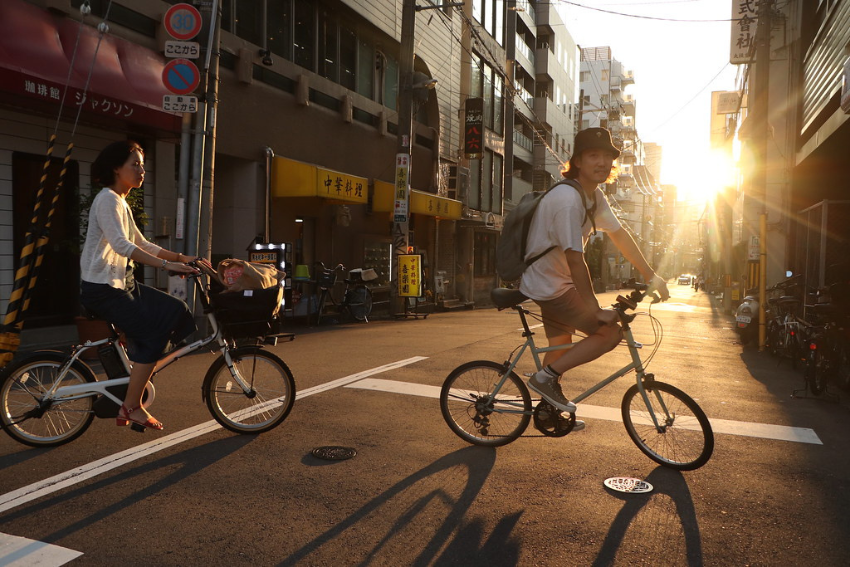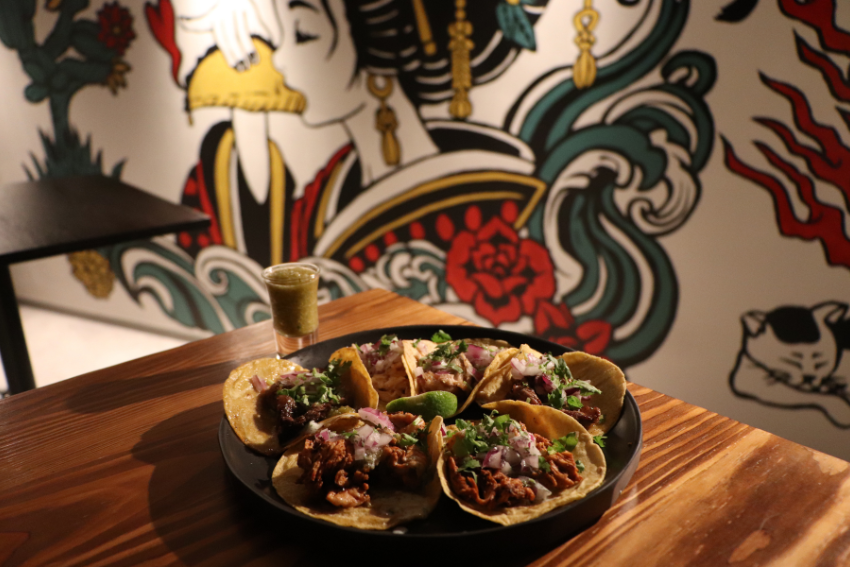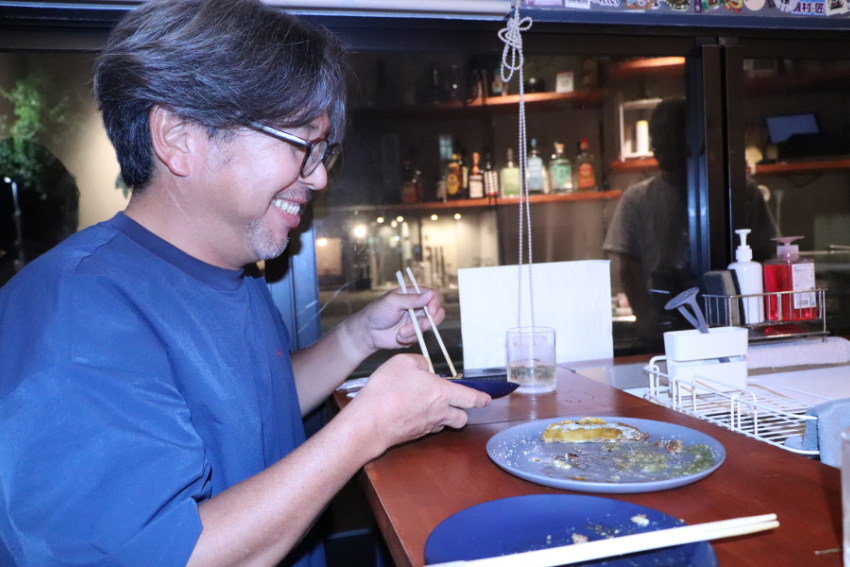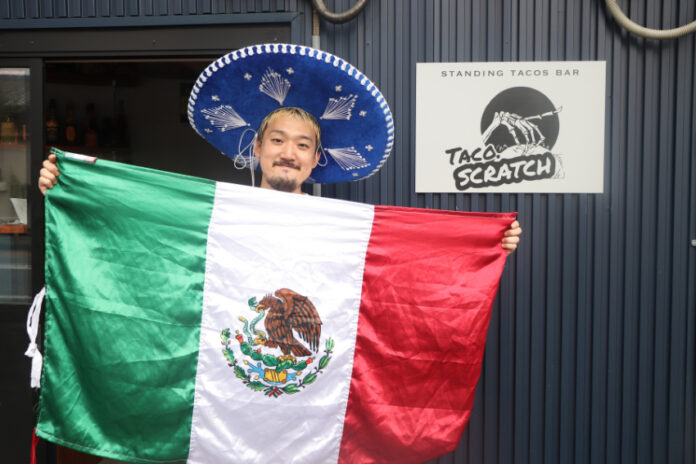A few days ago, I was in Kyoto, the ancient capital of Japan. The last thing I imagined was that I would be tucking into some delicious tacos made by a local chef.
When you get to know another country, you want to taste the local cuisine to discover new flavors, especially in Japan, which is known for its rich and varied gastronomy. So, when I traveled to the country for the first time with some friends. I was excited to try everything, from the weirdest and most exotic things I could find at 7-Eleven, to the most traditional dishes in little restaurants where only locals go.
How I found a taquería in Kyoto, Japan

When I travel, rather than following a map, I like to follow my instincts and let myself wander through streets that look charming and photogenic to my photographer’s eyes; that’s how I often stumble upon tourist spots “by accident.” Also, I don’t like to follow the typical visitor’s route. I prefer to feel like a local and walk around places where tourists normally wouldn’t go. While I was in Kyoto, I left my hotel without a fixed plan, simply choosing the direction where most of the pretty things to see seemed to be and started walking.
A few kilometers later, I crossed the street and something caught my eye: some foreign guys were staring at a sign. I peeked to see what it said, and to my surprise, it turned out to be a Mexican taco stand. Of course, I decided to go in, partly because I was missing Mexican food a little — which, let’s be honest, as Mexicans we always do, even if we’re away from home for just two days — and partly out of curiosity to see if the tacos would be as good as in Mexico, or a disappointment. At that moment, I felt like the official judge in charge of giving a verdict on behalf of the entire country.
The story behind Keita’s taquería
When I entered, I ordered three tacos: one carnitas and two steak. The place was small, with just a counter, a bathroom and a kitchen — no chairs — just like tacos are eaten in Mexico: standing up. Since it was such a small space and because it was just me and the taquero, conversation flowed easily. As soon as I ordered my tacos, I pulled out a 100-peso bill, showed it to him and said: “I’m Mexican.” He was pleasantly surprised and delighted that a Mexican had come to his place to try his tacos. I was even more surprised to watch this Japanese man, Keita, prepare those delicious tacos with such enthusiasm and care: first placing the tortilla on an elegant black plate, then the freshly grilled meat, a handful of diced purple onion, followed by cilantro, guacamole and finally the essential squeeze of lime.
While he prepared the tacos, we chatted a bit and he told me his story. In 2018, he went on a student exchange program to La Paz, Baja California Sur, for three months. Every day of his stay in Mexico, he tried tacos of different kinds. He was so captivated by the taste that when he returned to Japan a couple of years later, he decided to open his own taquería.
Where the ingredients come from

Keita makes his own tortillas — he only buys the masa online, which costs about ¥1242 (154 pesos, or US $8.40) on Rakuten Market. They even sell blue corn masa there. At first, he used to visit Mexican restaurants and ask chefs how tortillas were made; he also researched online. For four and a half years, since opening his place in Fukushima, he has been perfecting the process until developing his own original recipe. I must say the tortilla was delicious, with the perfect thickness, color and size — much better than the pale tortillas you usually find in other countries.
As for the other ingredients, like onion, meat, avocado and lime, he buys them at his local market. This didn’t surprise me, since Japan has a great variety of fresh fruits and vegetables. The salsa he makes is green, using tomatillos and serrano chiles, which he can also easily find in specialty stores.
The tacos looked amazing, enticing from the very first glance, as good as any you’d find in a taquería in Mexico. The moment I took the first bite, I was amazed by the flavor and even though the salsa wasn’t very spicy, the whole ensemble was an homage to the Mexican taco. I was even more surprised to discover that Keita also made the carnitas himself. I felt so happy to taste them, not feeling disappointed at all, but rather amazed that Japanese hands could create something so faithful to Mexico.
A cultural exchange over tacos
As I ate, we kept talking about his fascination with Mexico, and he noticed my fascination with Japan as I told him I was trying to learn to write hiragana and katakana. It turned into a very interesting cultural exchange. I showed him what I had learned, and he taught me other things, like how to write numbers, how to say thanks, and how to write my name in hiragana. The place was decorated with Mexican banknotes left by other customers, and one of them happened to be the famous axolotl bill. Then, in my hiragana and katakana practice book, I found that axolotl in Japanese is ウーパールーパー ‘ūpārūpā’. So, I pointed at the axolotl and said “ūpārūpā”; he was surprised to find out that the bill hanging on his wall featured an ūpārūpā.

I asked him how many Mexicans visited his place each day, and he told me about 10 on average, which is quite a lot, especially since many come in big groups of friends or family. He also said he receives about 20 Japanese customers daily and the rest are foreigners of other nationalities: Americans, Australians, Germans, French, Dominicans, Salvadorans, Danes, and a few Chinese, all united by the taste of Mexico. I found it really interesting that so many Japanese people visited and were curious about tacos. When I asked why, he said Mexican food has gained huge popularity thanks to the Netflix series “Taco Chronicles.”
Gifts from a satisfied customer
Between chats, tacos and laughter, time flew by and my heart filled with joy after finding Taco Scratch and having that conversation with Keita. On leaving the place, I couldn’t stop smiling about the experience I had just enjoyed. Of course, I returned two more times, eager to taste those tacos again and chat more with my new friend. On my last day in Kyoto, I stopped by to say goodbye and gave him a Mexican flag and a charro hat as a token of my gratitude for his effort and dedication to honoring Mexican culture in such a way. Keita says he would love to return to Mexico and live there someday.
Keita, ありがとうございます
María Ruiz is the Director of Digital Marketing at Mexico News Daily. She enjoys photographing her hometown of San Miguel de Allende in her spare time.
